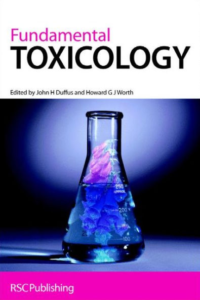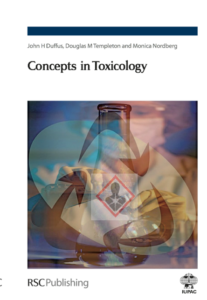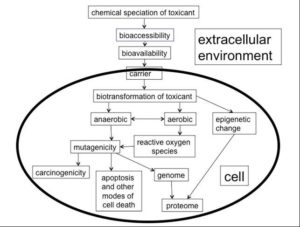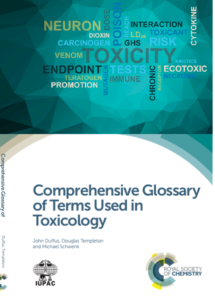In 1973, IUPAC established a Commission on Toxicology, within the framework of the Clinical Chemistry Section. Following the fundamental objectives of IUPAC from its very

beginning, the prime objective of the Commission was to promote world-wide “regulation, standardization, or codification” in relevant areas of chemistry. Since 1973, the science of toxicology has developed rapidly, along with recognition of its importance in the maintenance of human health. There have been two main driving forces. First, the success of synthetic chemistry in producing many new substances with useful properties that contributed to better health and a better quality of life and second, the gradual realisation that new substances might bring with them problems if not handled properly. Unforeseen problems had arisen, for example, from excessive use of antibiotics, promoting the evolution of antibiotic resistant bacteria, and from careless disposal of waste and pesticides damaging our environment. The awareness of such problems led to the introduction of new legislation such as the U.S. Toxic Substances Control Act (TSCA) and the European Regulation, Evaluation, Authorization and Restriction of CHemicals (REACH). On these foundations, amongst others, the Globally Harmonized System of Classification and Labelling of Chemicals (GHS) was built by the United Nations. GHS defines and classifies the hazards of chemical products, communicating health and safety information via labels and safety data sheets. It has been adopted internationally as the agreed basis for the replacement of the assortment of hazardous material classifications and labelling schemes previously used around the world.
The main driving force for the global harmonization of classification and labelling of chemicals was the need for globally agreed-upon legislation covering production, marketing, use, and disposal of chemicals. In its absence, trade in chemicals had been seriously impeded, and even blocked, by national differences in legislation and, underlying them, in toxicity classification and labelling. Key to the development of GHS was the action of the Organisation for Economic Cooperation and Development (OECD) in producing expert-approved toxicity tests that, if followed carefully, would provide data that were mutually-acceptable between nations and provide a basis for mutually-acceptable toxicity classifications. Without this, international acceptance of GHS would have been impossible.
All of the developments in international harmonisation of toxicity classifications and in subsequent health and safety legislation, environmental protection legislation, and legislation covering the life cycle of chemicals from production to final disposal, had consequences for chemists. However, at the time, few chemists were acquainted with toxicology and its terminology. Accordingly, the IUPAC Commission on Toxicology decided to set up a project to produce a toxicology textbook written with chemists in mind. It was clear that this book must have a glossary of toxicological terms if it were to be standalone textbook. This project started in 1989 and resulted in a toxicology textbook for chemists and set of Powerpoint slides that are available (though not the CD listed alongside) on the IUPAC Educational Materials website* for download as a basis for teaching and learning fundamentals of toxicology. (See: http://media.iupac.org/publications/cd/essential_toxicology/index.html).
The book was subsequently published in two editions by the Royal Society of Chemistry (RSC).1 This book carried its own glossary and this formed the basis for the first IUPAC Glossary of Terms used in Toxicology2 and, with it, a strategy for glossary preparation that underlies all succeeding toxicology glossaries.
*Note: The old IUPAC Educational Materials website has not been updated for some time, but still carries useful material such as the toxicology slides.




 about 1,200 fundamental terms. It was been adopted by the U.S. National Library of Medicine and is the glossary associated with the ToxTutor modules on ToxNet (
about 1,200 fundamental terms. It was been adopted by the U.S. National Library of Medicine and is the glossary associated with the ToxTutor modules on ToxNet (
 safety law and practice. There were two annexes, one containing a list of abbreviations used in toxicology and and one containing a list of abbreviations used by international bodies and regulatory authorities.
safety law and practice. There were two annexes, one containing a list of abbreviations used in toxicology and and one containing a list of abbreviations used by international bodies and regulatory authorities.